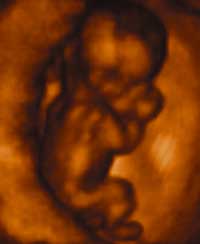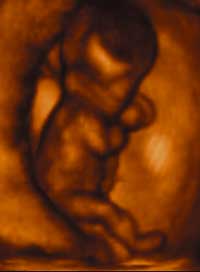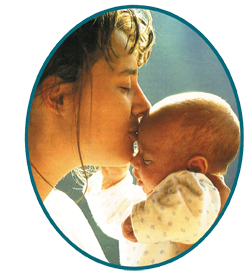Science proves that human life begins at conception (fertilization) when a genetically unique human being comes into existence, with his own genetic code.
Check out The Biology of Development in the Womb.
Latest Documents on Fetal Pain:
Fetal Pain Research.pdf
Fetal Pain- The Evidence.pdf
Fetal Pain the rest of the story.pdf
Fetal Pain.pdf
Pain of the Unborn.pdf
Check out these videos
In the widely used medical textbook, The Developing Human, Clinically Oriented Embryology, 6th Edition, Moore, Persaud, Saunders, 1998, states on page 2 that “The intricate processes by which a baby develops from a single cell are miraculous …. This cell [the zygote] results from the union of an oocyte [egg] and sperm. A zygote is the beginning of a new human being ….” On page 18 this theme is repeated: “Human development begins at fertilization ….”
Dr. Jerome Lejeune, “Father of Modern Genetics” and discoverer of the cause of Down’s Syndrome, stated, “To accept the fact that after fertilization has taken place, a new human has come into being is no longer a matter of taste or opinion . . . it is plain experimental evidence.”
“The unborn baby is alive from the first moment of conception of a single egg and a single sperm.” N.Z. Health Department: Pamphlet No 83 Your New Baby (Government Printer) 1969.
Dr. McCarthy de Mere, medical doctor and law professor of the University of Tennessee, testified: “The exact moment of the beginning of personhood and of the human body is at the moment of conception.”
Former abortionist and founder of the National Abortion Rights Action League, Dr. Bernard Nathanson, said “It is atrocious for anyone now to maintain that a fetus [unborn child] is simply a lump of meat, or something insignificant or an unprotectable life.”
In 1933, abortion advocate and former medical director of the Planned Parenthood Federation of America, Dr. Alan Guttmacher, wrote, “We of today know that man is born of sexual union… and that the embryo is formed from the fusion of two single cells, the ovum and the sperm. This all seems so simple and evident to us that it is difficult to picture a time when it was not part of the common knowledge.” And in 1961 Dr. Guttmacher wrote, “Fertilization, then has taken place; a baby has been conceived.” If a man who has dedicated his life to promotiong contraception and abortion can acknowledge the scientific facts of when life begins, why can’t we?
Below are amazing pictures that prove unborn infants are able to do more things than doctors realised. They show a 6cm foetus walking, kicking and stretching at just 12 weeks – long before the mother feels any movement.
Womb Walker
By Caroline Jones, Women’s Editor for the Mirror UK Periodical
Lift Leg
 Groundbreaking ultrasound scan clearly shows the tiny infant raising right leg, weeks before mother will have felt it moving about in womb.
Groundbreaking ultrasound scan clearly shows the tiny infant raising right leg, weeks before mother will have felt it moving about in womb.
On Bended Knee
 As baby wriggles around it raises a knee towards its stomach in another of the images that surprised Professor Stuart Campbell.
As baby wriggles around it raises a knee towards its stomach in another of the images that surprised Professor Stuart Campbell.
Kick Out Foot
 Now the infant lashes out. Professor Campbell admits his detailed pictures will help to fuel the debate over abortion.
Now the infant lashes out. Professor Campbell admits his detailed pictures will help to fuel the debate over abortion.
At 18 weeks the baby opens its eyes and blinks. Experts previously believed foetuses’ eyes stayed shut until 26 weeks. In the pictures, taken with new 4D ultrasound scan technology, the foetus is also seen rubbing its face aged just 10 weeks and yawning five weeks later. Others show the child smiling at 22 weeks. which doctors thought happened only six weeks after birth. The incredibly detailed scans are sure to spark fresh calls for new curbs on abortions, 80 per cent of which occur before 13 weeks.
Prof Stuart Campbell, who pioneered the 4D technique, admits they have forced him to change his views. The obstetrician said even he was taken aback by the scans. He said: “When I began I was startled at how early many of the crucial foetal developments take place. I’m forever being asked by mums, ‘When does my baby start sucking its thumb? When can it blink?’ Now we know exactly when these milestones occur.”
“We’ve always thought babies had their first smiles six weeks after birth, but the images show sunny smiles from 22 weeks. “I believe they’re a reflex response to pleasure – the womb’s a very warm and comfortable place to be. “Conversely, when giving foetuses a tiny push to turn them around during ultrasounds, I’ve seen the side of their mouth turn down in a definite frown of annoyance.”
Prof Campbell, of the Create Health reproduction clinic in London, also found that at 14-15 weeks infants can suck their thumbs. And they can touch their index finger with their thumb at 17 weeks. Next month he will publish Watch Me…Grow, a book showing a foetus’s weekly development in pictures. The professor acknowledges pro-life activists will use them to press for a clampdown on abortions.
Under current law, terminations must take place before 24 weeks.
The exception is if the mother’s life is in danger or if there is risk of “grave, permanent injury” to her mental or physical health. Prof Campbell is not anti-abortion but said: “Having seen how early babies begin to develop, my beliefs have changed. “I now think 24 weeks, if the baby is healthy, is too late. Seeing how advanced a foetus is at this stage makes the idea of ejecting it from the womb quite disturbing”. “The world is a different place from 1967, when the abortion law was first passed, and science has moved on. Now we know so much more about how a baby develops in the womb, the law needs to be reassessed, but in a calm, reflective way.”
Last year saw 175,568 legal abortions in England and Wales. All must be agreed by the mother and two doctors and take place in an NHS hospital or approved centre. Around four in five take place before 13 weeks, with around a third between 10 and 12 weeks. Last year, 114 pregnancies were terminated after the 24-week mark.




